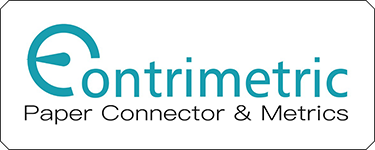Preserving Heritage Buildings with Building Information Modelling: Addressing the Challenges and Opportunities
DOI:
https://doi.org/10.70028/sgm.v1i1.5Keywords:
Building Information Modelling, Preserving heritage buildings, key challenges and opportunitiesAbstract
Preserving heritage buildings presents unique challenges in building conservation, demanding a comprehensive understanding of issues and strategic measures for long-term sustainability. The aims of this paper is to analyze the interrelationships among these organizations. The paper utilizes Cronbach's alpha reliability test, normalized mean ranking, overlap analysis, Kruskal-Wallis test, and Spearman's rank correlation for systematic data analysis. The findings of this paper will provide practical insights for organizational practitioners in identifying critical challenges and opportunities when preserving heritage building with Building Information Modelling (BIM). The paper illuminates both similarities and differences in preservation difficulties and approaches among organizations, offering profound insights into sectoral connections within the construction industry. Beyond addressing critical problems in building maintenance, this document serves as a guide for organizations navigating and overcoming hurdles in conserving heritage structures. The research outcomes offer strategic insights, promoting the development of a post-project maintenance-oriented culture. Ultimately, this contributes to enhancing the durability, efficiency, and cost-effectiveness of cultural structures in both public and private sectors.
Downloads
References
Law of Malaysia. National Heritage Act 2005. Malaysia, 2005.
F.H. Ali, and S. Bandi, “Associations between building information modelling (BIM) data and big data attributes” American Scientific Research Journal for Engineering, Technology, and Sciences. vol. 76, no. 1, pp.1-11, 2021.
M. Grazianova, and P. Mésároš, “HBIM: The digital transformation of cultural and existing heritage” MATEC Web of Conferences, vol. 385, 2023. doi: http://dx.doi.org/10.1051/matecconf/202338501040
I. Omurtay, A. Soyluk, and A. Ünay, “Use of BIM with modular construction in future construction techniques. MANAS Journal of Engineering. 2024. doi: http://dx.doi.org/10.51354/mjen.1220152
T.K. Gireesh Kumar, “Identification, documentation and promotion of cultural heritage: problems and prospects in the Indian context” Journal of Cultural Heritage Management and Sustainable Development, 2022. doi: http://dx.doi.org/10.1108/JCHMSD-03-2022-0043
A.A. Bellanti, “Effectiveness of building information modeling in existing structure construction compared to new structure construction” 2020.
M.S. Raza, B.A. Tayeh, Y.I. Abu Aisheh, and A. Maglad, “Potential features of building information modeling (BIM) for application of project management knowledge areas in the construction industry” Heliyon, vol. 9, issue 9, September 2023. doi: http://dx.doi.org/10.1016/j.heliyon.2023.e19697
C. Wu, Y. Yuan, Y. Tang, B. Tian, “Application of terrestrial laser scanning (TLS) in the architecture, engineering and construction (AEC) industry” Sensors, vol. 22(1):265, 2022. doi: http://dx.doi.org/10.3390/s22010265
A.Z. Sampaio, J. Tomé, and A.M. Gomes, “Heritage building information modelling implementation first steps applied in a castle building: historic evolution identity, data collection and stratigraphic modelling” Heritage, vol. 6(10), pp. 6472-6493, 2023. doi: http://dx.doi.org/10.3390/heritage6100338
S. Bruno, M. Fino, and F. Fatiguso, “Historic building information modelling: performance assessment for diagnosis-aided information modelling and management” Automation in Construction, vol. 86, pp. 256-276, February 2018. doi: http://dx.doi.org/10.1016/j.autcon.2017.11.009
T. Gümürçinler, O. Akboğa Kale, “Evaluation of occupational safety in restoration projects of historic buildings: risk analysis with selected projects. Buildings, vol. 13(12):3088. 2023. doi: http://dx.doi.org/10.3390/buildings13123088
S.L. Mahajan, L. Tanner, G. Ahmadia, H. Becker, N. DeMello, R. Fidler, A.R. Harborne, A. Jagadish, M. Mills, P. Cairney, S. Cheng, B. Fariss, Y.J. Masuda, M. Pabari, M. Tengö, C. Wyborn, and L. Glew, “Accelerating evidence-informed decision-making in conservation implementing agencies through effective monitoring, evaluation, and learning” Biological Conservation, vol. 286, October 2023. doi: http://dx.doi.org/10.1016/j.biocon.2023.110304
I. Ahmed, and A.K. Jena, “Using non-parametric Kruskal-Wallis H test for assessing mean differences in the opinion of environmental sustainability” International Journal of Geography, Geology and Environment, vol. 5, issue 1, part A, 2023. doi: http://dx.doi.org/10.22271/27067483.2023.v5.i1a.146
T. Van Hecke, Tanja. (2010). “Power study of ANOVA versus Kruskal-Wallis test” Journal of Statistics and Management Systems, vol. 15, pp. 241-247, Jun 2013. doi: http://dx.doi.org/ 10.1080/09720510.2012.10701623
E. Ostertagova, O. Ostertag, and J. Kováč, “Methodology and application of the Kruskal-Wallis test” Applied Mechanics and Materials, vol. 611, pp. 115-120, August 2014 doi: http://dx.doi.org/10.4028/www.scientific.net/AMM.611.115
D.L. Bandalos, and S.J. Finney, “Factor analysis: Exploratory and confirmatory” Routledge, 2019.
P. Kislyakov, E.A. Shmeleva, L.F. Luneva, and O.A. Silaeva, “Application of factor analysis in psychological diagnostics (sample: study of students’ social safety)” International Journal of Advanced Studies, vol. 5, no. 2, 2015. doi: http://dx.doi.org/10.12731/2227-930X-2015-2-4
N. Balasundaram, “Factor analysis: nature, mechanism & uses in social and management researches” Journal of Cost and Management Accountants, vol. XXXVII (2), pp.15-25, 2009.
N. Shrestha, “Factor analysis as a tool for survey analysis” American Journal of Applied Mathematics and Statistics, vol. 9, issue 1, pp.4-11, 2021. doi: http://dx.doi.org/10.12691/ajams-9-1-2
M. Tavakol, and A. Wetzel, “Factor Analysis: a means for theory and instrument development in support of construct validity” International Journal of Medical Education, vol. 11, pp. 245-247, 2020. doi: http://dx.doi.org/10.5116/ijme.5f96.0f4a
Downloads
Published
Issue
Section
License
Copyright (c) 2024 Mohamad Lokman Idris, Abdul Rahimi Abdul Rahman, Bala Ishiyaku, Ahmad Rizal Alias (Author)

This work is licensed under a Creative Commons Attribution-NonCommercial 4.0 International License.













